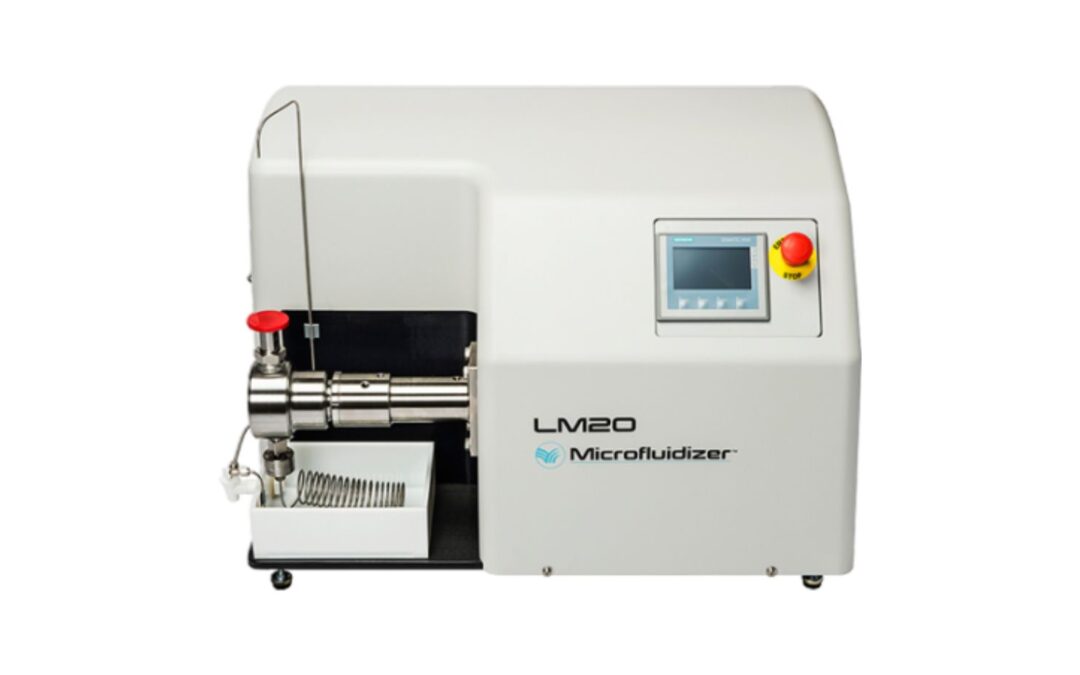Deagglomeration is the process of reducing the size of loosely bound clusters (agglomerates) of powders or crystals without causing any further fragmentation of the individual particles themselves. This process is critical to ensuring a more uniform formulation in applications where one material is being dispersed or mixed with another.
Different Methods of Deagglomeration
There are two main methods of deagglomeration: dry milling and wet milling. Wet milling is often the preferred technique because it offers greater precision, protects delicate particles, and operates more efficiently. In wet milling, a liquid medium is added to the material, which helps break apart clumps by reducing surface tension and utilising mechanical inertia. Wet milling is the preferred process, as it allows for more precision and speed while protecting more fragile particles at the same time.
The Procedure of Deagglomeration
Deagglomeration is a process that tackles the issue of solid materials, like powders, or solid/liquid blends, such as slurries, clumping together and forming lumps. These agglomerates can cause various problems in a product, including uneven settling and the production of lower-quality results. Additionally, they can create undesirable textures in products that should be smooth and free from lumps. Not just that, but Deagglomeration also eliminates safety issues for pharmaceutical applications and poor coverage and inconsistent viscosity for paints and inks.
Advantages of the Deagglomeration Process
There are several advantages to using deagglomeration.- Ensuring a more uniform formulation in applications where one material is being dispersed or mixed together
- Preventing settling to eliminate a less uniform and lower-quality product
- Avoiding undesirable textures for products that are meant to be completely smooth and lump-free
- Addressing safety issues for applications such as pharmaceutical products
- Improving coverage and consistent viscosity for materials such as paints and inks
Which Industries Use the Deagglomeration Process?
Deagglomeration is a critical part of the dispersion process. It helps to ensure a more uniform formulation in applications where one material is being dispersed or mixed with another. The industries that use the deagglomeration process include personal care, pharmaceutical, food and beverage, chemical, and cannabis processing.
How does Deagglomeration Work in the pharmaceutical industry?
Deagglomeration plays a crucial role in the dispersion process within the pharmaceutical industry. It helps achieve a uniform formulation when combining or mixing different materials. This process specifically addresses the issue of solid materials, like powders, or solid/liquid blends, such as slurries, clumping together and forming lumps.
How Does IDEX Enable the Deagglomeration Process for Industries?
IDEX provides Microfluidizer Processors that deliver exceptional outcomes in producing uniform nanoemulsions, disrupting cells, and achieving consistent particle size reduction. These machines consistently surpass expectations by achieving substantial reductions in particle size and remarkably uniform particle size distributions. The exceptional efficiency of this technology is attributed to the unique design of their exclusive fixed-geometry Interaction Chamber. The ability to precisely control the shearing level grants customers the flexibility to accomplish particle size reduction goals using less energy.
Conclusion
Deagglomeration is an important process that offers several advantages over other methods. It allows for better flow properties, improved compressibility, better content uniformity, an improved dissolution rate of poorly soluble drugs, reduced dust levels during the manufacturing process, reduced air entrapment, and increased powder compressibility. Microfluidics by IDEX offers equipment for deagglomeration that is technologically superior and optimised to meet customer needs.
